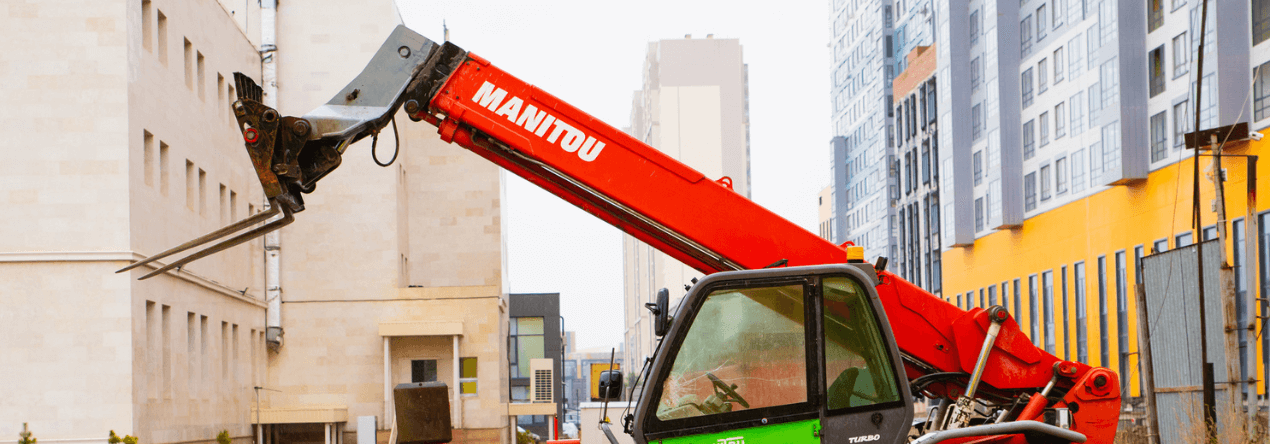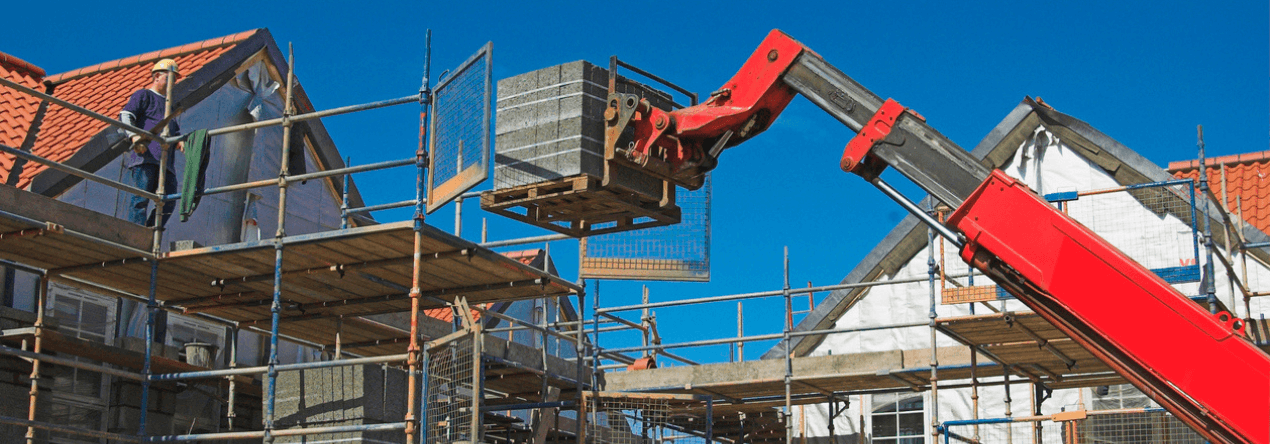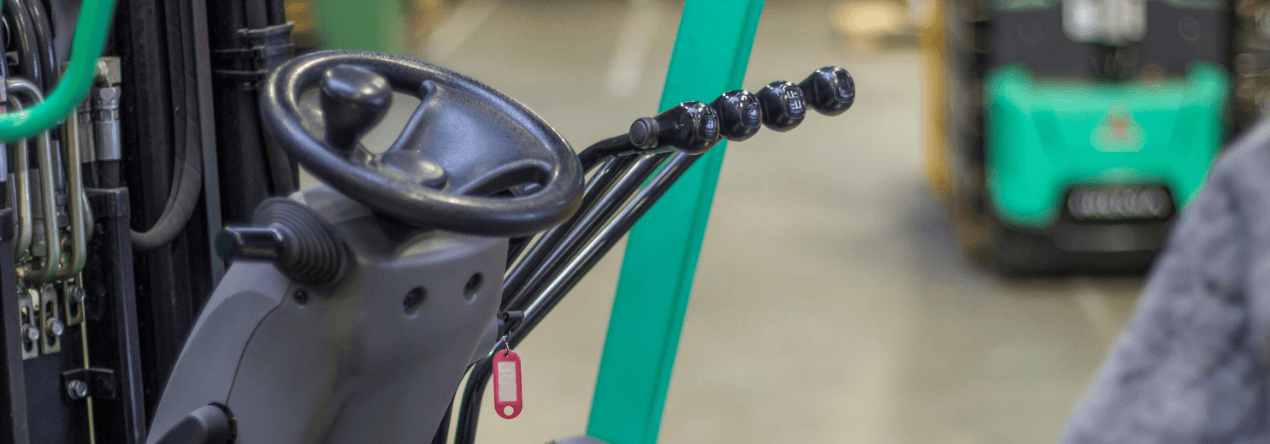
Blog
What is the Difference Between Telehandlers & Telescopic Forklifts?

What exactly is the difference between telehandlers and telescopic forklifts, and more importantly, which one do you need? Let’s break down the main distinctions with a special look at the Manitou telescopic forklift, known for reliability and performance.
What is a Telehandler?
A telehandler, short for telescopic handler, is a versatile piece of equipment commonly used in construction, agriculture, and other industries where heavy lifting is required. Think of it as a hybrid between a forklift and a crane. It has a telescopic boom that can extend forward and upwards, making it perfect for tasks that require reach and lifting power.
- Versatility: Telehandlers can be fitted with various attachments such as buckets, pallets, and lifting hooks, which make them adaptable to different tasks, such as moving pallets or lifting debris.
- Lifting and height capabilities: The extendable boom allows telehandlers to lift loads to significant heights and distances, which is great for stacking, placing materials on rooftops, or loading trucks from afar.
- Rough terrain capabilities: Telehandlers are often designed to operate on uneven or rough terrain, making them an ideal choice for construction sites or agricultural fields. They can handle mud, gravel, and hills without losing their balance or stability.
Telehandlers offer flexibility, making them a great option for large projects, with a variety of tasks.
What is a Telescopic Forklift?
While similar in many ways to a telehandler, a telescopic forklift is generally more specialised for lifting and moving loads on pallets. It’s essentially a refined version of a forklift but with the added advantage of a telescopic boom.
- Purpose-built for lifting: Telescopic forklifts, like the Manitou telescopic forklift, are specifically designed for moving palletised loads, making them ideal for warehouse settings, industrial yards, and even construction sites where structured load lifting is a priority.
- Telescopic boom: Like telehandlers, telescopic forklifts have an extendable boom. This boom offers the ability to lift loads higher and further away than standard forklifts, making them a strong contender when you need extra reach in confined spaces.
- Less versatile but more focused: While a Manitou telescopic forklift doesn’t offer the same attachment options as a telehandler, it shines in tasks that require precision lifting and transporting of materials. Think of it as a specialised tool for load handling.
Key Differences Between Telehandlers and Telescopic Forklifts
While both machines might look similar at first glance, there are a few important distinctions that set them apart. Here’s a breakdown of the main differences between a telehandler and a telescopic forklift.
- Primary Use
- Telehandler: Built for versatility. You can switch between various attachments, allowing the telehandler to perform a wide range of tasks—from scooping up dirt to placing heavy objects at heights.
- Telescopic Forklift: Focused on lifting and moving pallets. The Manitou telescopic forklift excels in precision material handling, making it perfect for tasks that require careful manoeuvring in tight spaces or structured load transport.
- Lifting Capabilities
- Telehandler: Generally has a higher lifting capacity and greater reach compared to a telescopic forklift. Because of its crane-like capabilities, it can handle much larger loads and place them at greater heights.
- Telescopic Forklift: While it also has good lifting capabilities, the Manitou telescopic forklift is more suited to lifting palletised loads to medium heights. If you’re mostly dealing with warehouse operations or need precision in placing materials, a telescopic forklift is your go-to.
- Terrain Handling
- Telehandler: Made to handle rough terrain. These machines are equipped with large tyres and a high ground clearance, allowing them to work efficiently on construction sites or agricultural fields where the ground isn’t always smooth.
- Telescopic Forklift: While some models of telescopic forklifts, like the Manitou telescopic forklift, can handle rougher surfaces, they are generally better suited to areas with more stable terrain, like warehouses, paved construction sites, or industrial yards.
- Attachments and Versatility
- Telehandler: This is where telehandlers have the upper hand. With the ability to attach different tools, telehandlers can tackle a variety of tasks. It’s an all-in-one solution for different challenges on a worksite.
- Telescopic Forklift: The Manitou telescopic forklift is more focused. While it doesn’t have a wide range of attachments, it’s specifically designed for lifting pallets and moving materials efficiently.
- Operator Training and Ease of Use
- Telehandler: Due to their versatility and larger lifting capacities, telehandlers may require more comprehensive training to operate safely, especially when switching between different attachments.
- Telescopic Forklift: A Manitou telescopic forklift is generally easier to operate, especially for workers familiar with traditional forklifts. The learning curve is shorter, and operators can often get up to speed quickly with minimal additional training.
Choosing Between a Telehandler and a Telescopic Forklift
Now that we’ve looked at the main differences, the question is: which one is right for your business? The answer largely depends on the type of work you need to get done.
- Go for a telehandler if: You need a multi-purpose machine that can tackle a variety of tasks, especially in rough terrain. It’s perfect for construction sites where lifting heavy materials to great heights is necessary, and for farms where versatility is key.
- Choose a telescopic forklift if: You’re primarily handling palletised loads in more structured environments like warehouses or industrial yards. The Manitou telescopic forklift is your best bet when precision and efficiency in load handling are the priorities.
Both machines have their strengths, but it’s all about picking the right tool for the job.
Why Manitou Telescopic Forklifts Stand Out
Manitou has a long-standing reputation for manufacturing durable, reliable equipment that’s built to last. Here’s why their telescopic forklifts are an exceptional choice:
- Sturdy design: Manitou forklifts are built to handle heavy-duty tasks while maintaining precision and control. Whether you’re stacking pallets or transporting materials across a large site, these machines won’t let you down.
- Operator comfort: With a focus on ergonomics, Manitou ensures that their telescopic forklifts are easy to operate over long shifts, reducing operator fatigue and increasing productivity.
- Customisation options: Manitou offers a range of models with varying lifting capacities and boom lengths, so you can choose the one that best fits your operational needs.
There isn’t a clear winner between telehandlers and telescopic forklifts, as they each have their own strengths. Whatever your needs, understanding the differences will help you make the right choice for your business, and if you’re still unsure, you can always count on our expert advice.
Get in touch with us today and talk to the plant hire experts.
You May Also Like


6 Reasons Electric Forklifts Can Boost Your Business

Benefits of Doosan Electric Forklifts
Get in Touch
Not sure what you are looking for or need some advice for your requirements? Get in touch with us today and a member of our experienced team will be more than happy to help answer your questions.
